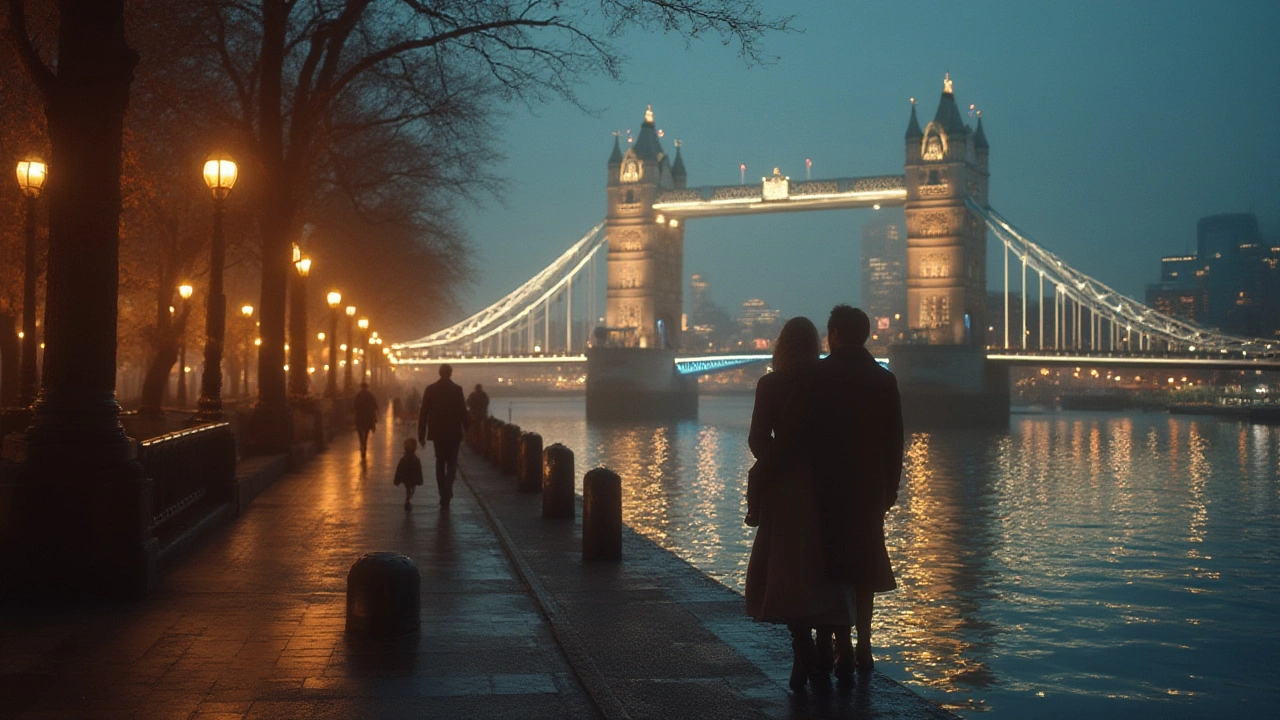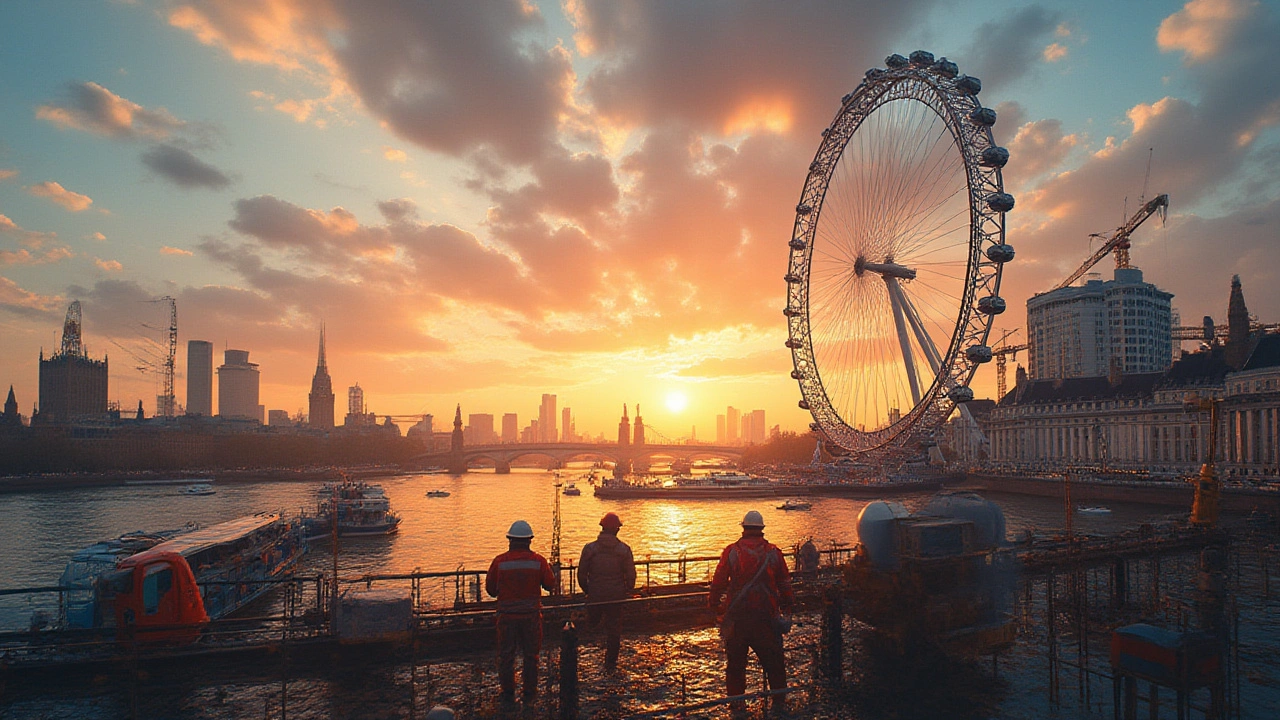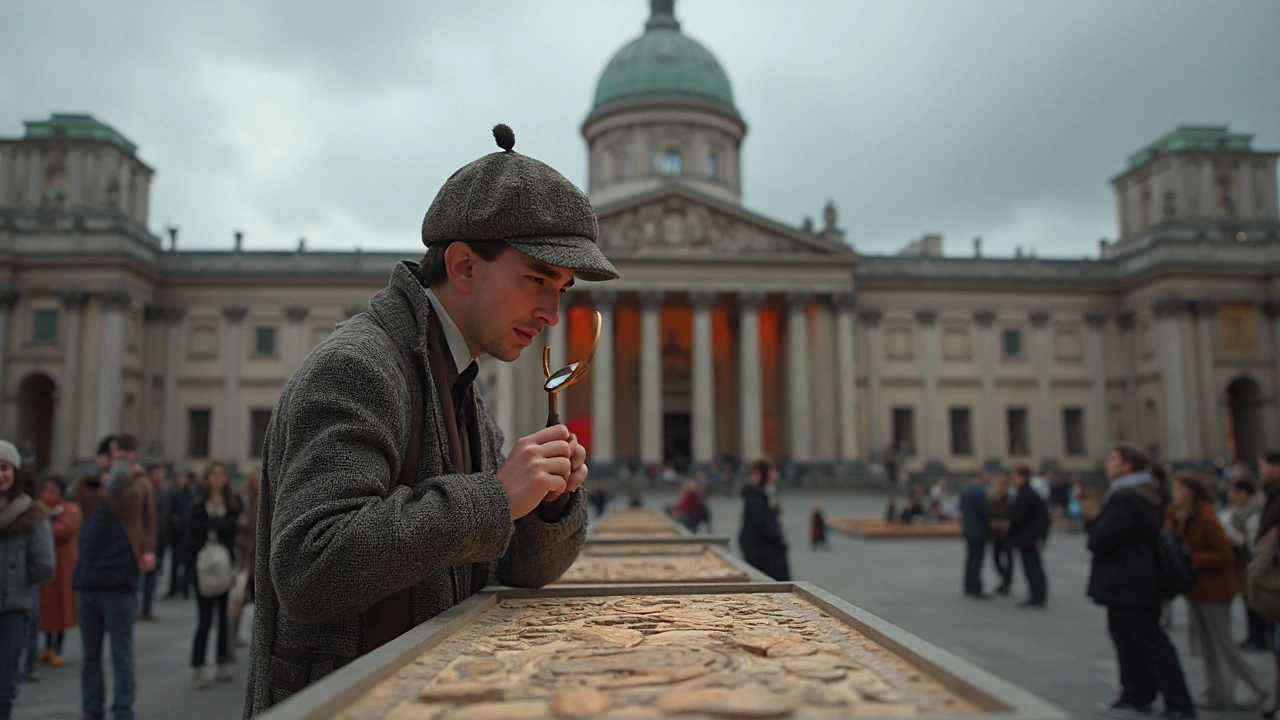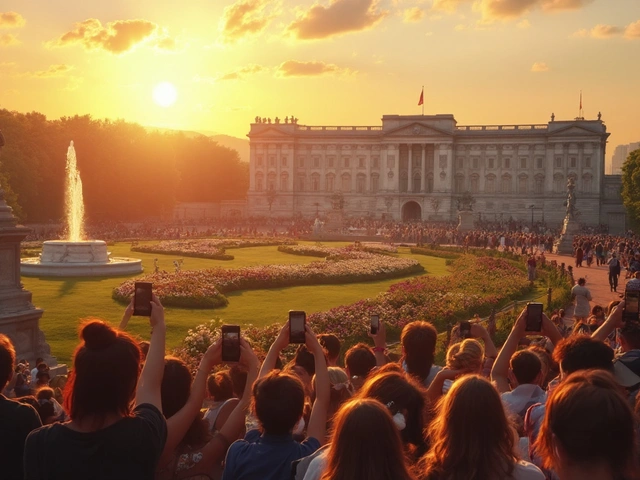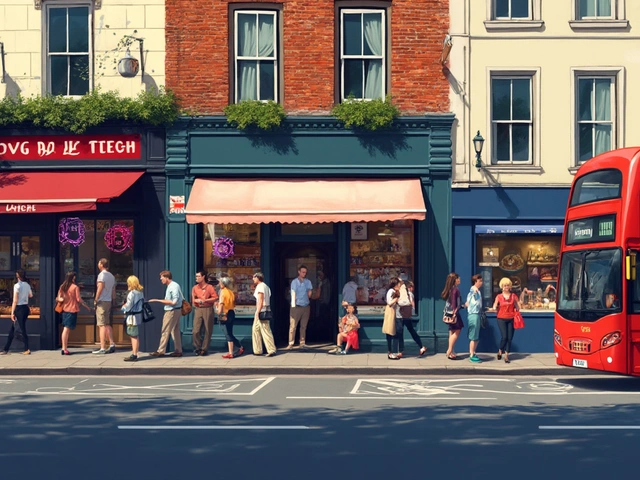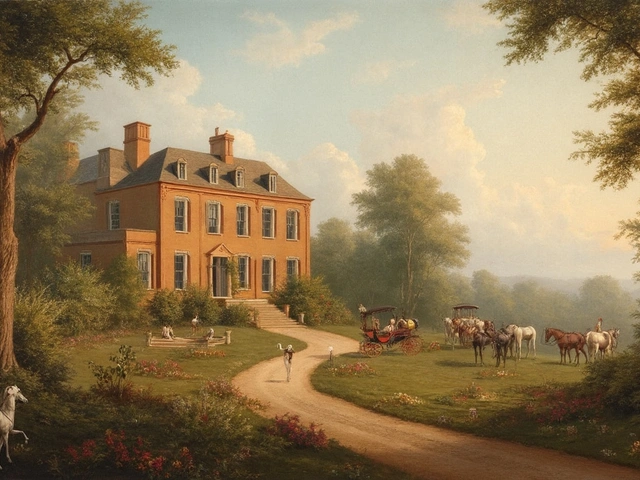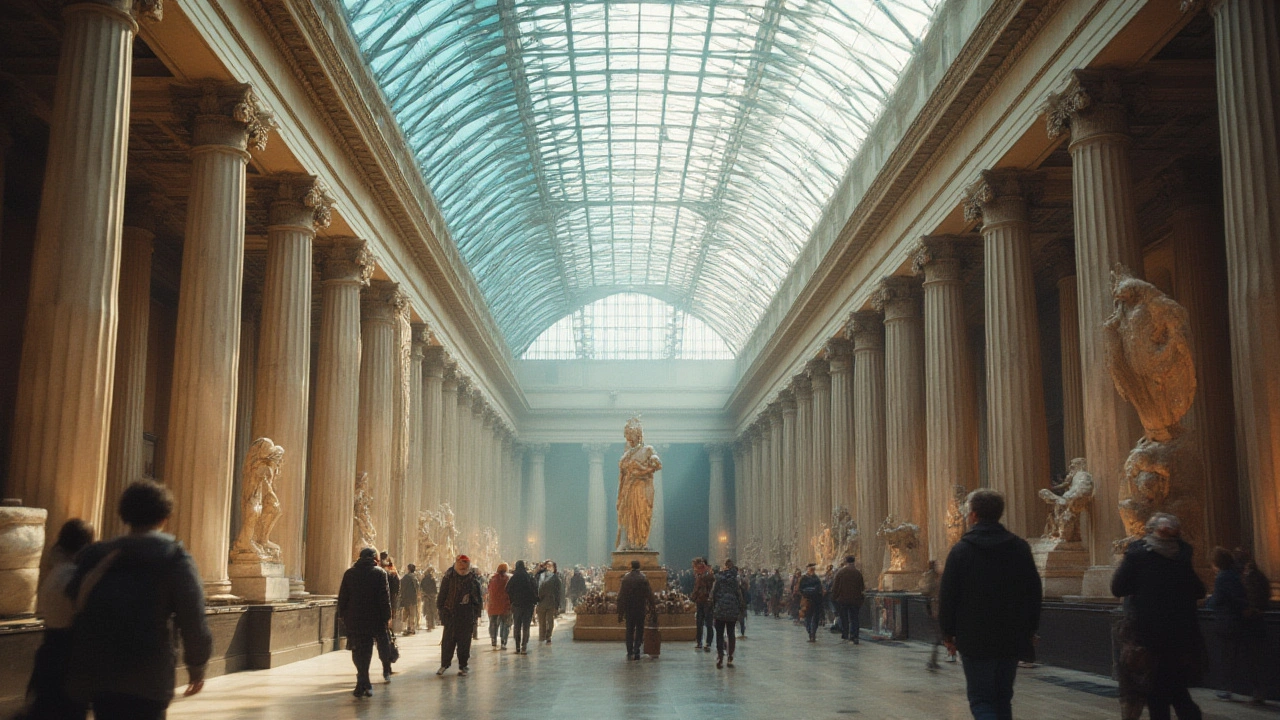
Wandering through Bloomsbury on a sticky summer afternoon in London, you’ll see streams of visitors old and young, school trips blending into queues of tourists, all heading in one direction. The British Museum quietly dominates this part of the city—both physically, with its neoclassical columns, and in spirit, as a living archive of humanity’s history. In London, where stories and traditions are woven into every street, the museum is more than a building; it’s a bridge between cultures, centuries, and continents. You don’t need to be an historian or an art buff to marvel at its treasures. If you’re after a genuine London experience, the British Museum tells the story of the world, right on your doorstep.
Why the British Museum is a London Icon
London is a city obsessed with its past and future, its tea rituals and tech startups, its fish and chips and fusion street food. But if you ask Londoners to pick one place that captures the city’s soul, the British Museum will always get a mention. Opened in 1759, it was the world’s first national public museum. Instead of hoarding wonders for the elite, it flung open its doors for free—then, as now. Today, that sense of radical openness still makes the British Museum special, especially in a city where entertainment often comes with a sky-high price tag. Free entry lets you pop in for an hour between a class at nearby UCL or a stroll after a coffee on Tottenham Court Road, or escape the rain with the kids without breaking the bank.
But the real draw isn’t just the lack of an entrance fee. The collection itself is jaw-dropping. Two million years' worth of human ingenuity fill more than 90 galleries. You’ll pass the Rosetta Stone, which unlocked the secrets of ancient Egyptian writing. There’s the Parthenon sculptures, contentious and magnificent. Samurai armour, Mayan hieroglyphs, Assyrian winged lions—together in a single walk. Visiting can feel like a whirlwind trip from Mesopotamia to Maida Vale and back again, without ever leaving London. And unlike some velvet-rope museums, there’s a lived-in, accessible vibe here: pushchairs next to rare Greek ceramics, art students sketching bronze Buddhas, volunteers gently steering confused visitors without a hint of snobbery.
Here’s a striking number: The British Museum counts nearly 6 million visitors a year (that’s more than Wembley Stadium on a match night multiplied several times over!), making it one of the most visited attractions not only in London but the whole world. It’s a favourite, not just for first-timers to the city but for Londoners themselves—a sort of living room for the city, with more mummies and mosaics than sofas.
Unmissable Masterpieces and Hidden Corners
If you’ve ever wandered in through the Great Russell Street entrance and paused under the glass-and-steel roof of the Great Court, you know the feeling—it’s awe, but mixed with comfort. From here, your only problem is deciding where to go first. Many people make a beeline for the iconic must-sees. The Rosetta Stone, which cracked the code of Egyptian hieroglyphs, sits surrounded by crowds nudging each other for a glimpse. Nearby, the Parthenon sculptures—sometimes called the Elgin Marbles—spark debate and admiration in equal measure. You can’t leave without meeting Hoa Hakananai’a, the enigmatic Easter Island statue that feels almost alive in the dimly lit gallery.
But the magic often hides where the crowds thin out. Down a side corridor, you’ll find the Lewis Chessmen—12th-century walrus ivory pieces from the Isle of Lewis, famously featured in the Harry Potter films. There’s the Enlightenment Gallery, a wood-paneled pocket where you’re surrounded by 18th-century specimens and curiosities, collected before science and magic became enemies. Or the Japanese galleries where, if you catch the right time, you might see a kimono-dressing demonstration or chat with a curator who’s passionate about samurai swords.
For Londoners who love a good story, every object here comes with one. That patchwork mummy case, discovered by Victorian explorers in a dusty tomb, was once a sensation in Bloomsbury drawing rooms. The Sutton Hoo helmet looks like it could have been plucked from the set of The Lord of the Rings, but it tells the real story of Saxon England, not just Tolkien’s imagination. Even the museum’s reading room has hosted legends—Karl Marx drafted Das Kapital at its desks, and Oscar Wilde once boasted about using its vast library.
It’s not just ancient wonders, either. There are galleries with clockwork gadgets, African masks, priceless coins. Every visit reveals new corners, especially for locals who drop in again and again. A London tip? Visit late on Fridays when the galleries are open until 8:30pm. The crowds thin, the artifacts seem to whisper a little louder, and you can actually linger over rooms like the Islamic art collection or the North American totem poles. And if you want an Instagram moment, the Great Court’s blue-tinged twilight is about as dreamy as London gets.
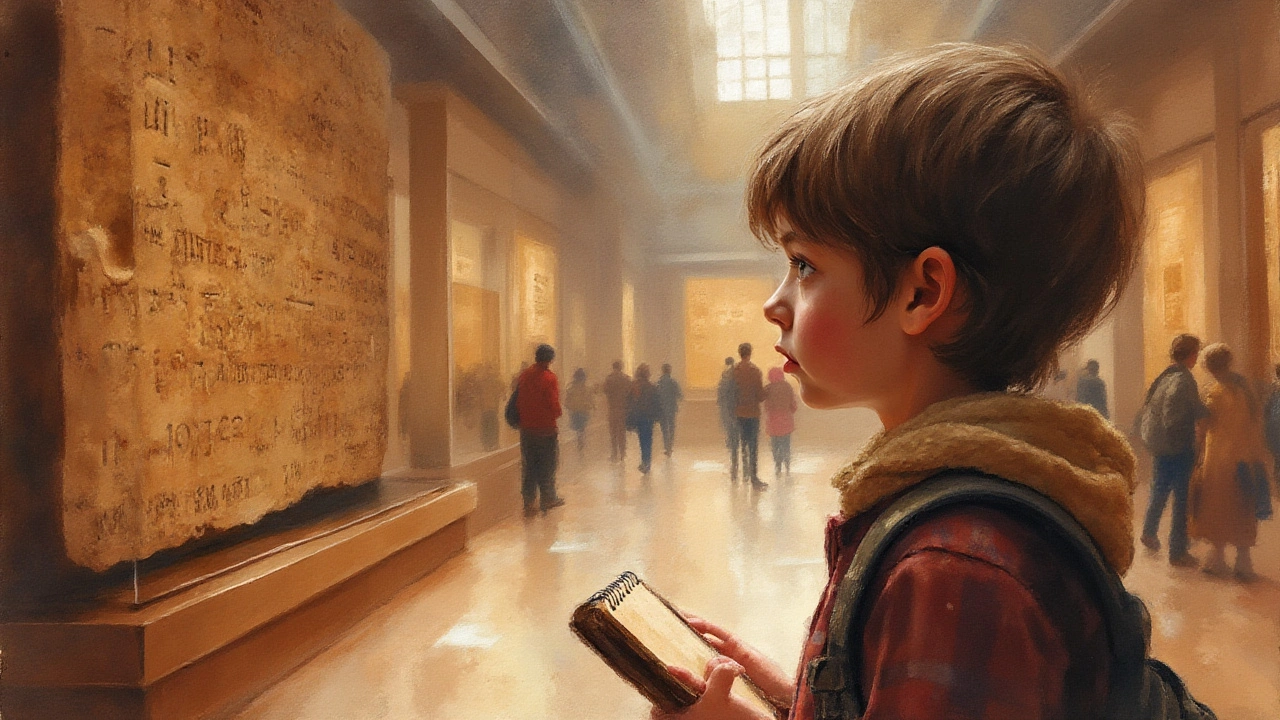
Planning Your Visit: Londoner’s Guide to the British Museum
London is spoilt for public transport, and the British Museum couldn’t be easier to get to—just a three-minute walk from Tottenham Court Road or a quick bus hop from Soho. If you’re lugging prams, mobility aids, or shopping from Oxford Street, access is smooth and step-free from the main entrance, and they’re great with assistance. The museum’s own app (free to download) gives you building maps, suggested trails, and up-to-date info on events and pop-up exhibits. You can even scan QR codes on the spot to dive deeper into the stories.
Weekends and holidays can get jam-packed, especially with international tourists ticking off the big London attractions in a day. For a more relaxed experience, pack your patience or come on weekday mornings. Locals in the know often plan a late Friday night for a calm wander, followed by a drink at a Bloomsbury pub or an al fresco dinner in nearby Charlotte Street—London’s answer to a Mediterranean plaza. Hungry kids (or grownups)? The BM has a range of cafes, but sometimes I duck out for a quick bite at the bustling food trucks near Bedford Square or pop over to a local institution like Gails for a sourdough cheese toastie before heading back for round two.
Bags are allowed, but there are security checks—keep your stuff light if you want to breeze through quickly. You can bring in your own water bottles; refill fountains are dotted around, perfect for saving a few quid. After you’ve had your fill of Greek myth and Ming porcelain, the museum’s gift shop is hard to resist, especially if you’re hunting for genuinely unique presents: think replica Roman coins, art-inspired scarves, or adorable hieroglyphic magnets. If you’re working nearby, lunchtime talks and pop-up workshops make a fun weekday break. For families, there are kid-friendly trails, hands-on science corners, and even sleepovers during school holidays (trust me, nothing beats watching your child fall asleep beneath ancient Assyrian friezes and waking up to breakfast in the Great Court).
Check the museum’s calendar—many events are free, but some blockbuster exhibitions (like the 2024 “Luxury and Power: Persia to Greece”) charge for entry. Book those in advance—they sell out fast, especially if they’re headline news. Curious about the museum’s origin story, controversies, or plans for returning artifacts? Free guided tours and regular debates dive into the complicated side of collecting, reminding us that London’s treasures have stories that aren’t always straightforward.
Fascinating Facts, Stats, and Tips Only Locals Know
Ever wondered just how vast the British Museum’s collection really is? There are over 8 million objects in total—enough to give every Londoner a couple of their own. Of those, only around 80,000 items are on show at a time. Don’t limit yourself to the ground floor: some of the best viking helmets and medieval manuscripts are up on Level 3, and upper levels are often shadier and quieter—trust me, it’s a godsend on a sweltering July day.
People sometimes ask if you need to book ahead. Right now, walk-ups are allowed, but the British Museum recommends reserving a free timed ticket online if you want a no-stress entrance. If you’re bringing kids or friends with special needs, look for the “Sensory Map”—this clever tool highlights quieter spots, hands-on showcases, and chill-out zones. For true enthusiasts, the museum also runs “behind-the-scenes” tours and volunteering opportunities—the closest you’ll get to touching history without a time machine.
Here’s a little-known hack: London residents can join the “Friends of the British Museum” programme for unlimited entry to ticketed exhibitions, private evening viewings, and discounts in the shop and cafes. It’s perfect if you catch yourself returning again and again—not just for culture, but for a spot to sit with a book or sketchpad away from London’s hustle. Art students often use the museum as an unofficial studio, and you’ll see writers perched in corners, scribbling notes for their next bestseller (guilty, in my case).
For anyone who loves numbers, here’s a snapshot:
| Fact | Figure |
|---|---|
| Total objects in collection | 8 million+ |
| Objects on display | ~80,000 |
| Annual visitors (pre-2020) | 5.9 million |
| Galleries open to the public | 90+ |
| First opened | 1759 |
One final tip: don’t treat the British Museum as a place to “do” in a single visit. Let yourself get lost, pop in for 20 minutes on your lunch hour, or spend a rainy Saturday getting to know one gallery in depth. The joy of living in London is being able to soak up these world-class collections on your own terms—no tourist rush required. Callum and I sometimes come just for a look at the Japanese prints before walking up to meet friends at the Brunswick Centre. There’s always something new around the next corner, a reminder that even in a city proud of its skyscrapers and selfie-spots, the past still has the power to astonish.
Comments (10)
- Matt H
- July 30, 2025 AT 20:26 PM
Visiting the British Museum is seriously a power move for those passionate about cultural and historical immersion. It's not just about snapping photos of epic artifacts—it's about understanding the raw lineage of human civilization through meticulously preserved relics. From the Rosetta Stone to the Elgin Marbles, every exhibit provokes a deeper engagement with the narratives that have shaped societies across ages.
One thing that often goes unnoticed is the museum's ability to synthesize complex historical data and present it in an accessible, almost narrative-driven format. For anyone who loves exploring the intersections of anthropology, art history, and archaeology, this place is like a live encyclopedia. No wonder it draws millions annually!
If you crave an experiential dive into mankind’s collective memory banks, the British Museum absolutely delivers, making it a pivotal stop on any London itinerary.
- Ashok Sahu
- August 2, 2025 AT 04:00 AM
Absolutely agree, the British Museum is a profound cultural institution. As someone from India, I find it inspiring how it brings together artifacts from vastly different civilizations under one roof, allowing visitors to reflect on our shared human history. It's important to approach these collections with respect and an understanding of their provenance.
Moreover, the museum encourages cross-cultural dialogue, fostering empathy and appreciation for diverse legacies. The galleries are thoughtfully curated to be educational yet engaging to all backgrounds. For travellers interested in seeing local London culture, it's also interesting to explore the nearby Bloomsbury area which offers a rich literary and academic history.
Visiting such places is a reminder of how interconnected our global heritage really is, and it urges us to preserve it responsibly.
- Vincent Jackson
- August 3, 2025 AT 07:46 AM
Hey folks, just wanted to throw in that this museum really lives up to the hype. I've spent hours wandering through the wings—sometimes returning multiple times during a single visit because there's just so much to absorb. The pacing is flexible; you can skim over some exhibits quickly or really get lost in detailed histories.
Don't get me wrong, some displays can feel a bit dense, but it's exactly that depth that makes it worthwhile. Also, for those on a budget, it's free, which is a huge plus.
One tip though: try visiting on weekdays early in the morning to avoid crowds. That way, you get a more personal vibe with the artifacts. Has anyone else done that? It’s a game changer.
- Jason Hancock
- August 3, 2025 AT 21:40 PM
Ugh, all this hype about the British Museum really gets on my nerves. I get that it’s famous but sometimes it feels like the same old recycled glorification of colonial-era tendencies. I mean, sure, the artifacts are cool, but the museum’s history of acquisition isn't exactly spotless, right? People often overlook that uncomfortable context.
Would prefer if more conversation happened about restitution and the ethics behind having some of these treasures so far from their countries of origin. It’s not just about admiring the past; it's about confronting complicated legacies.
So yeah, take the museum with a grain of salt. Not everything shiny is golden.
- Jill Norlander
- August 4, 2025 AT 11:33 AM
While I appreciate the grandeur of the British Museum, it's imperative to critique its curation rigorously. The museum sometimes romanticizes antiquity without adequate context, which can unintentionally perpetuate ethnocentric narratives. Visitors deserve to see these artifacts framed within their authentic, multifaceted histories, including the colonial shadows that accompany many pieces.
Furthermore, the museum's educational programs could benefit from incorporating more voices from the cultures represented. Authentic representation is crucial in fostering genuine understanding.
It's a space with immense potential, but also with significant responsibilities.
- Lynn Andriani
- August 5, 2025 AT 01:26 AM
i've got mixed feelings when it comes to museums like this. on one hand, the vast collections are mind-blowing and totally worth seeing, but sometimes i feel like the experience can get overwhelming fast. it's a ton of info and history, and honestly, my brain can only absorb so much at a time.
also, i think more casual, interactive elements could really help newbies or younger visitors engage without feeling lost or bored. maybe more multimedia, sounds, or even augmented reality stuff to spice things up? just my two cents :) but overall, yea, it's a must-visit if you're into history.
- Priyam Mittal
- August 5, 2025 AT 15:20 PM
Wow, this post takes me back to my trip there last year! The British Museum was honestly one of the top highlights. The way they showcase ancient artifacts makes you feel connected to humanity’s past in ways books just can’t provide. 🙂
Plus, the staff are super friendly and helpful, always ready to answer questions or guide you toward must-see items. Also, check out the free lectures if you get the chance—they add a lot to the whole experience.
London is such a vibrant city and this museum is definitely an essential stop to enrich any visitor’s journey, whether you’re traveling solo or with family. Don’t forget comfy shoes!
- Jess Williams
- August 7, 2025 AT 22:53 PM
Visiting museums like the British Museum often stirs profound reflections on the impermanence of civilizations and the enduring human desire to document and preserve meaning beyond our temporal lives. It's fascinating how these artifacts transcend their immediate context to pose questions about identity, power, and memory across millennia!
Though we interact with cold stones and ancient relics, they echo living stories, urging us to interpret and re-interpret what legacy truly means. In a way, each visit is both an intellectual and spiritual meditation on history's layered complexity.
I would encourage curious minds to take their time and contemplate not just what the objects are but what they signify within a broader human tapestry.
- Stephanie Suttle
- August 10, 2025 AT 06:26 AM
OMG, can we please talk about the utter chaos that sometimes reigns at the British Museum? Like, don’t get me wrong, I rever the collections but the crowds can be suffocating, and I’ve literally felt like I’m in a sardine can most times.
Also, a lot of the plaques and explanations? So dry and on some days, almost unreadable if you’re not super into history. I wish there were more engaging storytelling and perhaps better guided tours that don’t drag but also don’t dumb things down.
And seriously, the cafe line is always a nightmare! Someone needs to sort that out.
- Charles Mitchell
- August 26, 2025 AT 11:20 AM
I just wanted to add that the British Museum is indeed a treasure trove, but it’s the little hidden corners that truly captured my heart. There are some quiet galleries that don’t get as many visitors but hold some of the most fascinating artifacts—things that tell stories you won’t find in mainstream guidebooks.
It’s those spots that invited me to slow down, contemplate, and sometimes just sit in silence reflecting on the vastness of human history and creativity. Museums like this remind me how much more there is to learn if we only take the time to look beyond the crowd favorites.
Highly recommended for anyone seeking a meaningful, immersive experience.

